The Dirt on Onions
Yesterday evening I decided it was time to harvest my patch of storage onions, so I hunkered down and spent about an hour and a half harvesting the onions and another hour and a half carefully laying them out to cure in the greenhouse. The time had long come when I needed to harvest the onions, and with an abundance of rain lately, I was worried about the onions rotting in the field and weeds completely taking over the patch, making it much more difficult to find the onions come harvest time. So with a dry afternoon on hand, I knew it was time to dig in.
This year, I planted two 150-ft beds of onions. Each bed was 4 feet wide and contained 2 or 3 rows of onions. One bed was devoted to “fresh eating” onions, as I like to call them, and the other was set aside for storage onions. The fresh eating onions were onions that I harvested with green tops. They don’t have any of the papery wrappers that you’re used to seeing when you buy a net bag of onions at the store. Instead, they are intended to be eaten fresh, no peeling necessary, and therefore, these onions won’t store long. Generally, they are varieties that are sweeter, containing more sugars, which contributes to their inability to store for a long time, but also makes them delicious raw and helps them to caramelize beautifully. In the fresh eating onion bed, I also included my summer leeks, which take fewer days to reach maturity than fall leek varieties, and are planted closer together so they remain small and slender, never getting bigger than a thumb’s width.

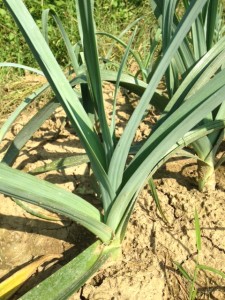
My storage onion bed contains five varieties of onions, all of which store well, according to my seed catalogs. Storage onions tend to be more pungent and less sugary, they make lots of layers of papery wrappers, and they can be cured then stored for months. Some storage onions can even make it through the entire winter if stored properly. The telltale sign that the onions are ready to harvest is when their green tops begin to brown and flop over. The onion is effectively curing itself by sealing off the watery sugars and starches in the bulb by creating a little pinched off crook in its neck where the tops fall over. This way, the green tops won’t transpire water out from the onion bulb.
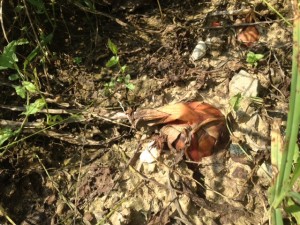

Most of my storage onions had their tops flop over a couple weeks ago, but a few stalwart onions continued to have perky leaves. I picked all of the onions that had flopped and shriveled tops and laid them out in my greenhouse to continue drying for the next week or so. In the greenhouse, they will be protected from rain and receive plenty of heat to ensure their papery wrappers are good and dry for storage. The onions that continued to have perky green tops were all from one variety, Rossa di Milano, a beautiful Italian red onion variety. I decided that the Rossas with green tops would become subjects in my first attempt to make a braided onion rope. Braiding is another option for curing onions, especially if you don’t have a lot of horizontal space for curing. By braiding the onion tops, you effectively make that little crook-in-the-neck seal that would naturally form when the tops flop over in the field. There are lots of videos online to help you learn to braid onions, and I watched a few before diving in. Basically, you braid the onions like you would braid hair, and you include some twine in the braid to help stabilize everything and to give you a loop to hang the braid from a hook or nail. My Rossa di Milano onion braid is currently hanging from the rafters of my front porch where it will get a little breeze to help the curing process and be protected from the rain.
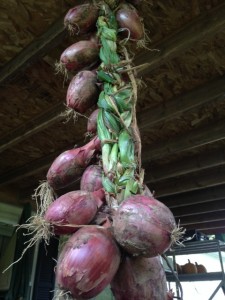
In seed catalogs, onions are classified as short, intermediate, or long day length onions. You must choose the right type for your spot on the earth. Farms in northerly latitudes in the Northern Hemisphere have long summer days so they should grow long day onions. Farms in southerly latitudes have shorter summer days, so short day onions are most appropriate there. Here in Northern Kentucky, I am almost at 39 degrees latitude, which is the southern edge of the long day onion zone. Most long day onions switch from growing green tops to making big bulbs once there is at least 14 hours of day length, and at my latitude that occurs after May 6 and lasts until August 5. That isn’t as large of a window for bulb formation as Maine or Washington, but it’s still three months, and my onions seem to be small to medium in size, accordingly. The problem with growing short day onions here is that they may bolt (i.e., go to seed) before forming a bulb. Overall, I am happy with the varieties I grew this year, and I will continue to try different long day onion varieties. I wish I had started my onions earlier, tended to them better when they were little baby onions in the greenhouse, and got them transplanted in the field earlier, but even so, I have a lot of onions to show for my efforts this year.
Food Dollars
I have no idea how accurate the sign is, but it got me intrigued to crunch the numbers. [PLEASE LET ME KNOW IF MY MATH DOESN’T ADD UP!!] Assuming that $500 million could be generated if Kentuckians spent 10% of their food dollars on Kentucky Proud products, that means that Kentuckians spend $5 billion each year on food. With roughly 4.4 million people living in the state of Kentucky, that means that every man, woman, and child in Kentucky spends roughly $1,140 on food each year. If each person were to allocate 10% of their food dollars to Kentucky producers, that would come out to $114 per person per year, or $9.50 per person per month. I don’t know about you, but that seems like a totally do-able amount of money to spend each month supporting local farmers, producers, restaurants, and farmers markets. In fact, it seems silly that folks can’t spend more than $10 per month on local food. It certainly will make me look at old Alexander Hamilton a little differently next time he peers up at me from my wallet.
I’m not trying to get super preachy here and say that everyone should make the same food choices as me, but I would challenge you to actively make your own food choices. What is important to you and your family when it comes to food? What kinds of food do you want to eat? Who produces the kind of food you want to eat? Where does that food come from? Your food dollars make a difference for the producers of that food, and it that way, your food dollars can directly support farmers and businesses in your community. But food dollars aren’t all that matters. I once heard someone say that every dollar you spend on food is like a vote, and while I understand the logic behind that idea, it makes me feel a little squirmy. It implies that the people with the most money have the most votes, and people with less money have fewer votes. There are so many things that you can do to support local food that don’t involve “voting” with your dollars. Sure, where you spend your food dollars makes a big difference, but you can also do things like grow some of your own food, whether it’s an expansive garden or just a few containers with basil on your balcony. You can cook more meals at home using local, seasonal ingredients. You can get to know your local food producers, ask them questions about their growing practices, and support them by spreading the word about their businesses. You can volunteer to help out on a farm or a community garden in exchange for food. You can donate fresh, locally grown food to a food pantry. You can support policies in your local government that protect agricultural lands and keep them available to farmers at affordable prices. You can simply just read a book or two about food. All of these activities will make a difference in how you eat, how you think about your food, how you choose to support food producers, and thus have a ripple effect through your food system.
- To look up Kentucky Proud producers, use the Find Kentucky Proud Producers Search Engine
- To find local producers in the Greater Cincinnati area, consult the Central Ohio River Valley (CORV) Local Food Guide. The guide not only lists local producers, but gives information on their growing practices.
Melon Mistakes
Melon season arrived on the farm last week, and it seems like it will only last another week or so. It’s a flash in the pan, but a sweet and juicy flash in the pan. I have never grown melons before this year. In the Pacific Northwest, where I learned most of my farming skills, it was difficult to grow melons because they like prolonged hot weather. I’ve learned a lot of lessons about growing melons (both cantaloupe and watermelons) this year, mostly from screwing up, so I thought I would share my screw-ups with you all so you too can learn from my mistakes.
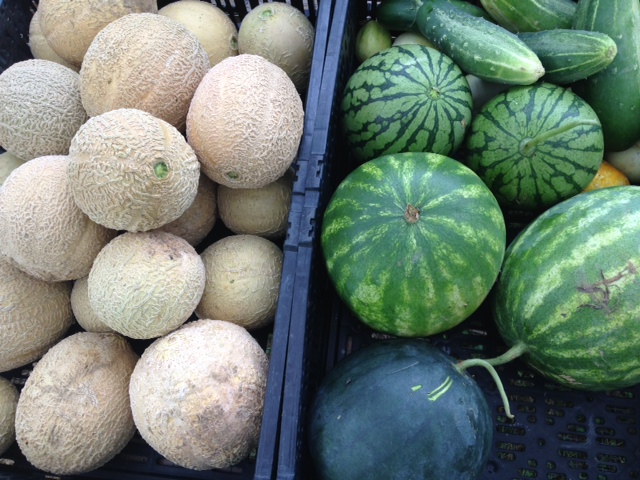
Our first melon harvest for market was August 9. Jackpot!
I thought any melon with orange flesh and tan, rough skin was a cantaloupe. That’s not true! Cantaloupes are a specific type of muskmelon. Other muskmelons include honeydew and Armenian cucumbers. The name refers to the fragrant odor that these melons release when ripe. Technically, the term cantaloupe refers to a specific type of muskmelon from Europe with orange flesh, but no ribs or netting. However, we have more recently accepted the term cantaloupe for all of the sweet, orange fleshed muskmelons with netting and ribs that are so popular in North America. Who knew? Not me, until I read the descriptions of muskmelons and cantaloupes in seed catalogs this winter.
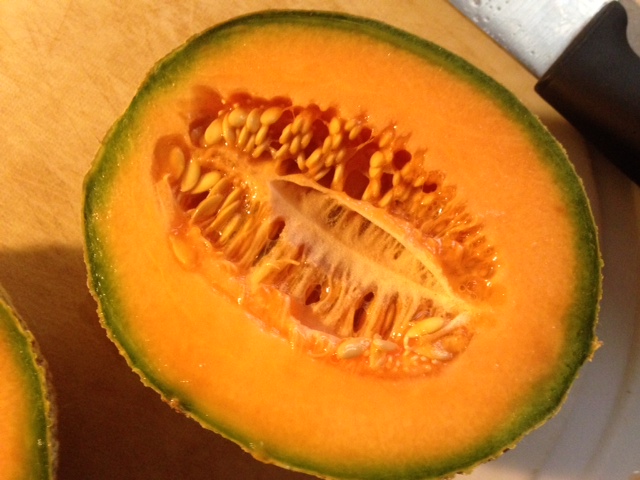
Melons, like their cousins, squash and cucumbers, have very long vines with large leaves. These plants do a great job of spreading and making a canopy of huge leaves, under which weed seeds have a difficult time germinating. Assuming that my baby melon plants would take off and out compete the weeds, I put “weeding the melons” very low on my priority list. The result? My melon patch is the weediest spot on the farm. Name the weed, and I’ve got it in my melon patch. Every time I harvest cantaloupes and watermelons, I feel like I’m on a treasure hunt. As fun as that is, it probably takes me 5 times longer to harvest melons than it would if I could actually see them sitting on the ground.

My favorite variety of watermelon is a small little yellow-fleshed watermelon called Petite Yellow. They are so sweet, and just the right size for two people to eat in one sitting. Another bonus – they are almost all flesh with very thin rinds. However, their sweet aroma and thin rinds makes them prime candidates for a late night deer snack. Just before all my Petite Yellow watermelons ripened, deer wiped them all out…ate the whole things and left only a tiny bit of rind on the ground. I managed to salvage one Yellow Petite that was well hidden under my weed canopy, and a couple more have grown since the major deer attack in mid-July, thankfully. I’m saving these little jewels to eat myself!

In mid-July after the deer attack on my Petite Yellow melons, I was gripped with fear that the deer would eat all of my melons, so I decided to start harvesting them. After all, if the deer were sniffing them out, they must be ripe, right?! Wrong. I picked two Sugar Baby watermelons and cut them open. One was completely white inside and the other was barely pink. Interestingly, they were still sweet. Not as sweet as a fully ripe melon, but still very edible. I decided to wait a couple more weeks, keep my fingers crossed that the deer would leave them alone. Luckily, the deer ignored them and I started finding ripe watermelons about two weeks ago. Of course, I had to taste test them before I brought them to market, so I didn’t begin selling any until last week. I have learned a few tips for identifying ripe melons. Watermelons have a little curly tendril that grows across the vine from their stems. When this tendril dries up and turns brown, your melon is likely ready, but you still want to look for a yellowish spot where the melon sat on the ground, and listen for a hollow sound when the melon is thumped. When all three of these signs have coincided, I have found nicely ripe melons. For cantaloupe, you can sniff the melons, and a strong sweet scent indicates they are ripe, plus they will slip right off the vine with barely any pressure. I have noticed that size doesn’t indicate ripeness; I have found large under-ripe melons, and tiny fully-ripe melons. It seems that size may have more to do with how much water the plant received than ripeness. I didn’t irrigate my melons at all, and they are smaller than average, but REALLY sweet, and still juicy. I think the lack of irrigation helped to concentrate the sugars rather than making a huge, watery melon.

Because I wait to pick my cantaloupes until they are super sweet, fragrant, and slip right off the vine, they have a very short shelf life. They seem to develop soft spots overnight. Although this makes them difficult to sell, I have found that they are still very good, and only need a little of the soft spots cut off. Even so, I haven’t been selling any of my cantaloupes that have bad soft spots. Instead, I have been eating them and giving them away to family and friends. In fact, I just cut up two of them and am trying out a recipe for melon sorbet. It calls for vodka. I’m not sure if that helps the sorbet reach the correct consistently, or it’s just to add a little livelihood to my dessert, but I didn’t question it, and I now have vodka-y, lemony, melon puree in my refrigerator cooling before I put it in my ice cream maker. You can try it out with watermelon too, or a mix of cantaloupe and watermelon. Cheers!
Dark Wood Farm FAQ
This past week, while I was out of town for wedding festivities, I caught up with a bunch of old friends. They had lots of questions about my farm, so I thought that this might be a great opportunity to answer those questions for a broader audience. Let’s call it a little Dark Wood Farm FAQ.
How’s the farming going?
It’s going well! It’s a lot of hard work, it keeps me busy, and I’m not getting a lot of sleep at the moment, but I fully expect to make up some of that sleep this winter. I really like being my own boss and being outside everyday. I feel really strong and healthy, and I’m learning so much about growing vegetables through trial and error.
What’s your favorite part of farming so far?
I love cooking food that I grew myself, and I love sharing my vegetables with family and friends. Cooking is a joy for me, and using such fresh, wholesome ingredients makes a huge difference in the quality of my meals. My family and friends are trying all kinds of new veggies out my garden and eating more fresh produce than normal, which really makes me happy. I also love talking to people at the farmers market, sharing recipes, and explaining what to do with all the odd vegetables I grow.
What are you going to do this winter?
Hopefully I will get some much-needed rest and do some traveling, but I’ll probably have to pick up a holiday job to make a little extra money. I will also have lots to keep me busy: planning next year’s crops, ordering seeds, cleaning and fixing equipment, and building new gadgets and infrastructure to make farm work easier!
Are you making any money?
Talking about money is awkward, especially when you’re starting a new business, but I think it’s important to talk about it so that consumers are aware of how hard farmers work and how little they get paid. I’m sure we all wish food was free, but we live in a world where most people don’t grow their own food, so the people that do grow food need to be compensated for the hard work they do to keep everyone fed with nutritious, safe, and delicious food. Yes, I am making money at the farmers markets, but I don’t know yet if I’ll recover all my expenses this year. At the beginning of the year, I bought a bunch of equipment and supplies to get me started, plus I always have my monthly rent and utility bills for the farm. It would be amazing if I could make everything back this year and have a little left over to pay myself, but most new businesses don’t make money in their first year because of all the upfront equipment costs. I’ll be able to answer this question a little better at the end of the year. Suffice it to say, I have a lot of vegetables to sell and I am selling them, but I don’t expect to get rich this year or any other year, for that matter. Farming is not a lucrative business, but most farmers don’t farm because they’re hoping to strike it rich.
Do you own the farm?
No, I am leasing the farm this year. The farm belongs to the Mays family, whom I have known for almost 15 years. They are leasing me the land where I grow the vegetables, plus a trailer on the property where I live. I also get to use the tractor and farm implements, and I can harvest from the existing apple trees, blackberry bushes, and strawberry and asparagus patches. I hope to have my own farm one day, but leasing is the best option for me as a first-time farmer. Without the burden of a mortgage, I can figure out if I will be able to farm full time without another income source, if there’s a market for the kinds of vegetables I want to grow, and if I am capable of growing said vegetables in Northern Kentucky’s soils and climate. I learned most of my farming skills in Washington and California, both of which have very different growing conditions than here. It is also extremely helpful to have some existing equipment on hand because it has aided in keeping my first year costs down while I figure out how to run my farming business.
How big is the farm?
The entire farm is roughly 35 acres, most of which is hilly and wooded. The parcel where I grow everything is just under 2 acres. Some of that 2 acres is taken up with grassy headlands, trees along the edges, my greenhouse, and a blackberry patch, so the actual area that I am tilling to grow annual vegetables is 1 acre.
Is your family glad to have you home?
That’s a question best answered by my family, but I am pretty sure they are happy to have me home. I have been away from Kentucky for 10 years, and while it feels like a big change to come home, it also doesn’t. My family and friends have been so wonderfully supportive that it has been pretty easy to pick up where I left off. Sure, I miss my friends in Seattle, but I also miss my friends from New York, and friends that are now scattered all over the country. I wish I could scoop them all up and bring them to my farm so we can all live together, but that’s not very realistic. Luckily, with the support of my friends and family here in Kentucky, I was able to take a little vacation to the West Coast for a wedding in mid-July when the farm was in full swing. I hope I will always be able to take trips like that, and I feel pretty blessed to have friends waiting with open arms wherever I go.

Water
Water has been on my mind lately. Mainly because I was worried that my plants weren’t getting enough of it during the final weeks of May. Until a few days ago, the top few inches of soil in the garden were turning dusty dry and the flow of the creeks running alongside my garden had turned from a gush into a trickle. While neighboring farms were busy irrigating their crops, I was busy doing a rain dance because…full disclosure here…I don’t have an irrigation system set up yet. I have a long to-do list for the farm, and setting up irrigation has been on that to-do list for a long time. I kept shuffling it to the bottom of the list because Mother Nature has been providing consistent rain or thundershowers (or snow) since my first seeds and plant babies went out into the field in March. So instead of looking my irrigation (or lack of irrigation) problem in the eye, I focused on other farm projects. Also, I have to admit, irrigation is a topic that makes my head spin, which is probably why I have procrastinated so long.
To irrigate crops, you need a water source and power to deliver the water to the crops. While I’m lucky that I have creeks bordering three sides of my farm, they don’t always hold water consistently throughout the year, and I don’t have an electric source anywhere near my field, so I need to have an alternative power source to pump water from the creeks. Another disclosure – I would rather not have to water at all. If I can get all of my water in the form of rain, it saves me a lot of time and worry. Plus, plants tend to be better at growing deep, water-seeking roots if you don’t water them too much. If the surface of the soil is consistently wet from regular irrigation, the plants will form shallow roots that stay near the surface and easily dry out when they aren’t irrigated. Normally, here in Kentucky, you can bet on warm rains throughout the summer, but we have experienced drought years, and who knows what will happen this summer, so I’m biting the bullet and buying irrigation equipment in case we have an unusually dry summer. Now I’m tackling the confusing-to-me subjects of water pressure, friction loss, filtration, and the puzzle of putting together pumps, fittings, pipes, hoses, valves, and nozzles. On top of all that, I have struggled to find a local irrigation supply store that carries agricultural irrigation products for small scale growers. There sure do seem to be a lot of lawn irrigation contractors and suppliers out there, but not a lot of options for people growing things other than grass. The nearest agricultural irrigation store I could find was in Lexington. I could try and order everything online, but I really wanted to talk to an expert and see how all those little fittings, hoses, and whoozeewhatsits go together before I purchased them. So, earlier this week after some hot days with no rain, I decided to drive to Lexington and talk to the fine people at Kentucky Irrigation. Now I’m the proud owner of some drip tape, a filter, pressure regulator, and various fittings. I still need to purchase a pump and a large diameter hose or pipes to deliver water from the pump up the field, but all of that can wait a little longer because my rain dance paid off – on Wednesday, we received an inch of rain. As luck might have it, most of it fell during the few hours we have to harvest vegetables for our Wednesday farmers market, but I’m not complaining. The plants are thriving now in moist soil and I get to procrastinate my irrigation problem for a little longer.
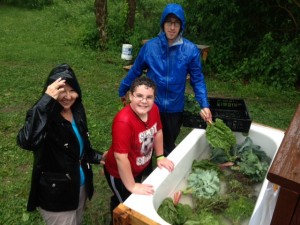
50% for humans, 50% for nature
Since I moved home to Kentucky and started the farm back in January, we have been experiencing some interesting weather to say the least. Subzero temperatures, abundant snow, pounding rainstorms, late season freezes, and early spring high temperatures have challenged this first-time farmer. Most of my farming experience has been in the Pacific Northwest and California. The climate and severe weather events in those places are much different than what we experience here in the tri-state region. I find myself checking the weather constantly and sorting through the different options in my mind about how to best protect my plants from weather extremes. This week, we’re going to have lows in the 30s and 40s for a few nights, then we’ll be back to highs in the 80s in no time. Some of the plants will love the cold weather (kale, collards, lettuces, and spinach) while others may hate it, or worse be killed by the cold (I’m looking at you, freshly transplanted summer and winter squash), and some will decide they’ve had enough of this crazy weather and go to seed. Like my gal Dolly Parton says, “It’s enough to drive you crazy if you let it.”

Around mid-March, I almost let it make me crazy. I was losing sleep at night wondering if my plants were going to survive in my unheated greenhouse during those weird 16 degree nights. I couldn’t decide if I should buy a heater for the greenhouse, move the plants inside my cramped trailer kitchen, or wait it out and see what would happen. If I lost my plants, I’d have to re-do all my seeding and then fall behind on my planting schedule, and consequently have a big gap in what I could bring to the farmers market in the spring. Indecision was swirling around my brain. I finally realized that I had to let go of all of that worry. Nature is unpredictable and I can’t be in control all the time. Sure, I could run out and buy expensive equipment to heat my greenhouse, or I could buy extra fabric row cover and cover everything in the garden, or I could buy equipment to mist the plants overnight to prevent frost from settling on the leaves. But that’s not what my farm is about. I’m trying to grow things in tune with nature, and nature is variable, sometimes violent, and certainly not sterile, or controlled. The plants have to deal with this variability, and so should I.
One of my farming mentors, Bob Cannard, used to tell me and my fellow student farmers, “50% for humans, 50% for nature.” By this he meant that only half of a farm should produce food for people to eat. The other half should go to all the other consumers in nature – the bugs, the rabbits, the deer, the soil microbes. It’s easy to get greedy and try to grow and sell as much as possible on a farm, especially when you have bills to pay. However, when we sacrifice some crops to all the other eaters in the world, the farm becomes a much more fertile and healthy place in the long run, and we can let go of chasing after the latest gadget or technology that will “save” our crops. As the farmer, I can get caught up worrying about killing frosts, insects eating my crops, or deer destroying my garden, or I can face challenges as they present themselves, and let go of the reins a little and trust that things will work out in the end. So what if the temperature drops low enough to kill my summer squash tonight? I’ll just have to re-plant them or plant something new in that space. In the meantime, my kale might grow more happily, some insect pests might die too, and the newly dead squash vines will compost into the soil to feed the next crops. 50% for humans, 50% for nature helps me to sleep a little better at night, and I’m thankful that Bob taught me that lesson.
Spring Greens
This weekend marks a momentous occasion for me and the farm – my first trip to the farmers market! Four busy months have passed since I moved onto my little piece of leased land down in Belleview Bottoms, and now it’s time for the vegetables of Dark Wood Farm to make their grand debut and start filling the bellies of folks around Northern Kentucky and Cincinnati. On Sunday, May 4 from 10AM-2PM, I’ll be bringing lots of spring greens to the farmers market at Findlay Market. Spring greens are a great source of vitamins, minerals, and fiber, which improve digestion and help your body detox after a long winter of heavy, fatty foods. As a bonus, most spring greens will enliven your taste buds with a spicy kick, bold nutty flavor, or bitter bite.


Most of the greens I’m bringing to market this week are in the mustard plant family, including arugula, french breakfast radishes, and Asian salad greens including mizuna and tatsoi. They went into the ground as seeds on March 24 and have grown happily through the cold, wind, rain, and even heat over the past 6 weeks. Their only nemesis during the spring months is a small, black, jumping insect called the flea beetle. Flea beetles emerge around the same time that the redbud trees bloom here in Kentucky, and when they start looking for food, they LOVE the spicy flavor of plants in the mustard family. Left unprotected from the flea beetle, spring mustards would look like they were blasted by a shotgun, with tiny holes all over the leaves. Some farmers prevent flea beetle damage by applying weekly doses of insecticides, but I don’t want to eat raw greens covered with chemicals, so I use fabric row covers to cover the vegetables that are most susceptible to flea beetle damage. Even so, some flea beetles find their way under the fabric and leave their trademark holes on my spring greens.
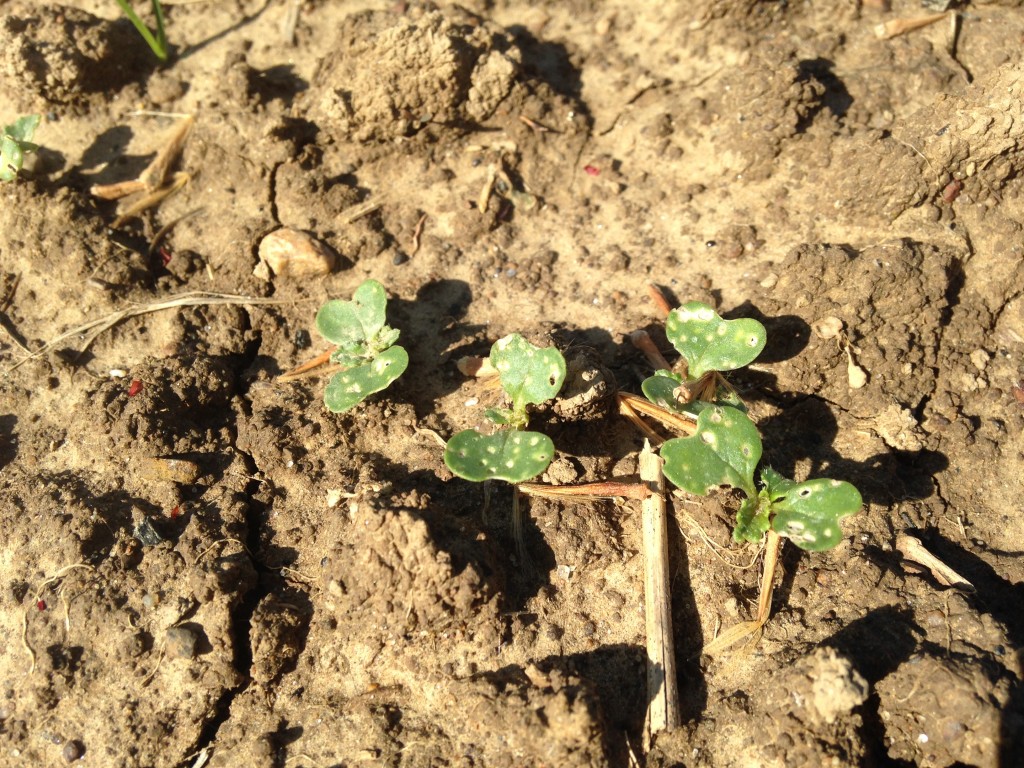

Since I cut spring greens by hand, I can check for flea beetle damage as I harvest. Really holey leaves get tossed on the ground become compost and feed the soil, but I do keep some leaves that have minimal damage from the flea beetle. The holes do nothing to affect the taste and quality of the vegetables, so if you find an arugula or radish leaf with a hole or two, don’t worry – in fact, rest assured that your veggies are free from chemicals and safe to eat.
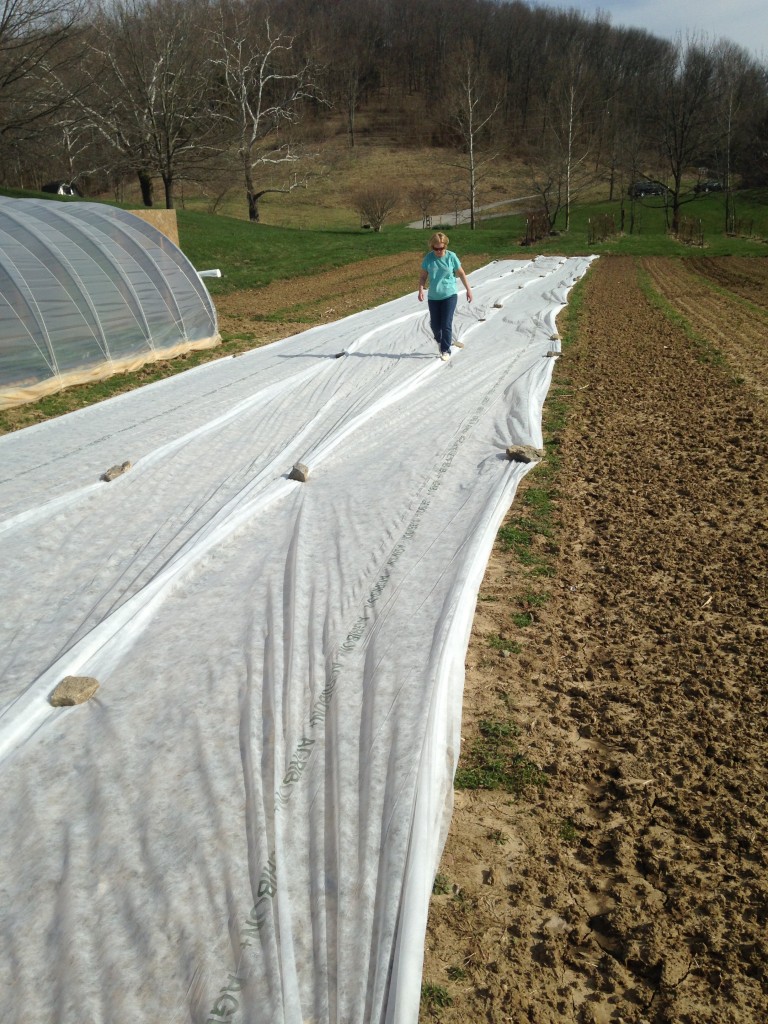
CORV Local Food Guide
If you live in the Northern Kentucky/Greater Cincinnati area and love local food, then you should pick up a copy of the 2014 Central Ohio River Valley (CORV) Local Food Guide. Inside you’ll find listings for local farms, farmers markets, wineries, restaurants, and community supported agriculture (CSA) programs. You can download the guide here.




